How to Choose the Best Pergola for Your Backyard
March 27, 2025
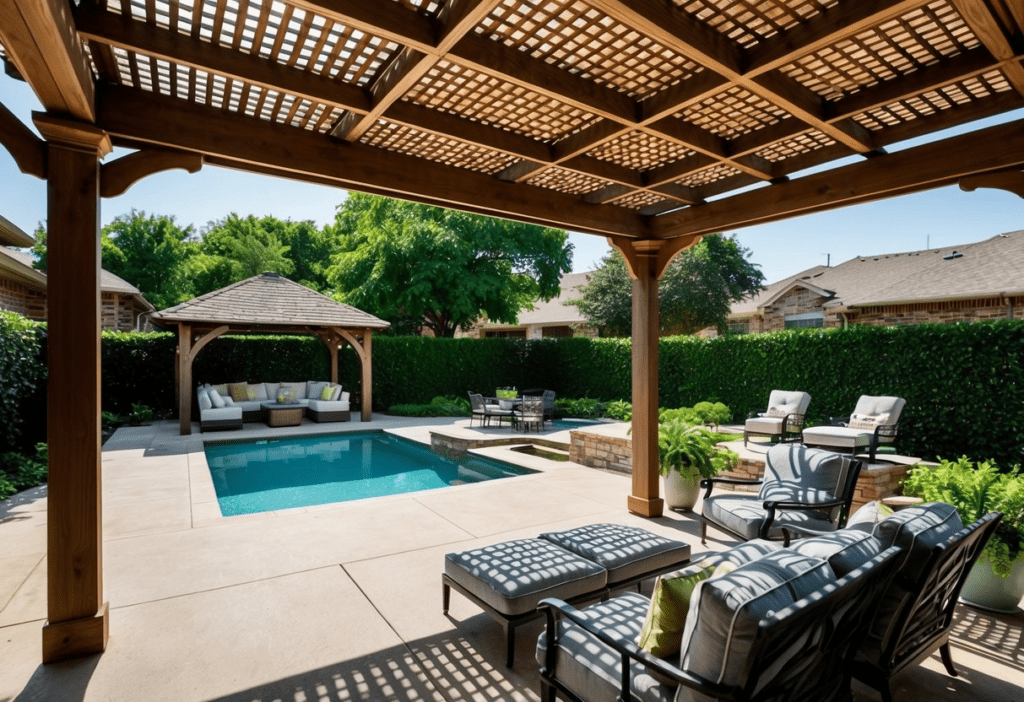
A pergola is a game-changer for transforming your backyard into a place where you can relax, entertain, and enjoy the outdoors.
Choosing the right pergola depends on your space, budget, and how you plan to use it. Whether you’re envisioning a simple wooden structure or a sleek aluminum design with a retractable canopy, there’s a perfect pergola for every style and need.
By adding a pergola to your yard, you’re creating a defined outdoor room. It provides shade, enhances your landscape, and can even support climbing plants to give you that natural, green touch. These versatile structures come in a variety of sizes and styles, ensuring a seamless match with your home’s architecture and your personal style.
Whether you’re looking for a standalone feature or one attached to your house to create a smooth transition between indoor and outdoor spaces, a pergola adds a lot of value and functionality to your yard.
Key Takeaways
- Choose materials and designs that align with your local weather and how you’ll use the space.
- Ensure the pergola’s size and placement fit your backyard layout.
- Match the style to your home’s design and your specific shade needs.
Understanding Pergola Basics
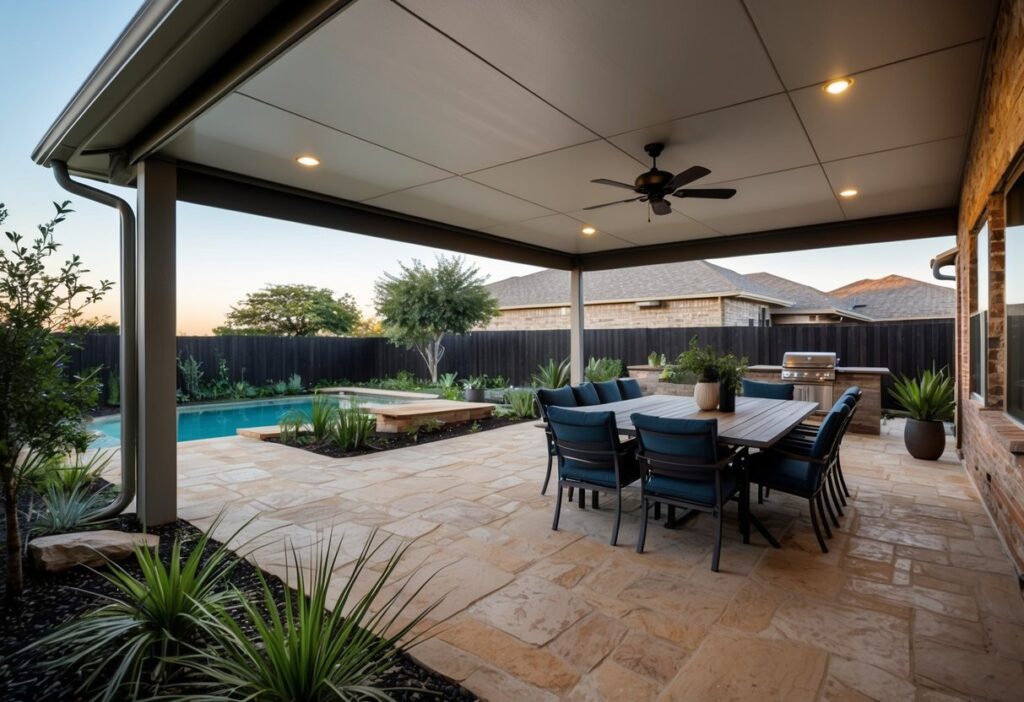
A pergola brings style and function to your outdoor space by defining areas for relaxation and entertainment, all while offering some much-needed shade.
What Is a Pergola?
A pergola is a freestanding outdoor structure made of vertical posts that support an open roof made of beams and rafters. It’s typically used to create shaded walkways, sitting areas, or even passageways in your garden or backyard.
The open-roof design lets light filter through while offering a bit of protection from the sun and rain. Pergolas are typically made from weather-resistant materials like cedar, redwood, vinyl, or aluminum, ensuring durability in different climates. Many homeowners also enhance the look of their pergola with climbing plants like wisteria or grapevines, adding natural shade and beauty to the structure.
Types of Pergolas
- Freestanding Pergolas: These create an independent outdoor room anywhere in your yard. They’re perfect for dining areas, lounge spots, or garden features.
- Attached Pergolas: These connect directly to your home, making them ideal for patios and deck areas. They effortlessly create a transition between indoor and outdoor living spaces.
Materials Options:
- Wood: Timeless, natural appeal
- Vinyl: Low maintenance and weather-resistant
- Aluminum: Rust-proof and lightweight
- Fiberglass: Durable and modern in appearance
There are also various roof styles, from flat tops to arched designs and adjustable louvered systems, which let you control the amount of sunlight filtering through.
Assessing Your Backyard Space
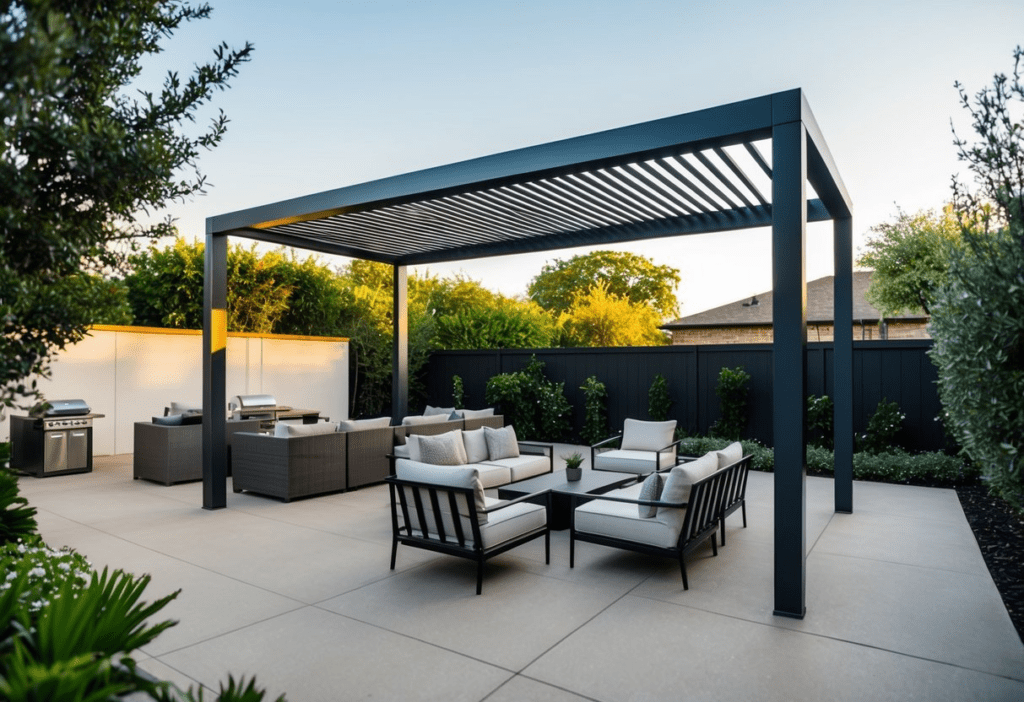
A well-designed pergola starts with a well-thought-out plan. Measuring your space, understanding sun exposure, and preparing the ground will ensure you get the perfect outdoor living setup.
Space Requirements
Begin by measuring the available area in your backyard. A pergola should have at least 2 feet of clearance on all sides to allow for proper airflow and easy maintenance.
Consider walkways and paths that will surround the pergola. The space should feel comfortable and open, not cramped.
Make sure to check with your local building codes and HOA regulations. Many areas have setbacks and height restrictions that may affect where and how tall your pergola can be.
Sunlight and Shade Considerations
Pay attention to how the sun moves through your yard. Understanding the sun’s movement helps you position your pergola in the best spot for shade.
For optimal results, pergolas are often placed east to west, which blocks the harsh afternoon sun while still letting in natural light in the morning.
If you already have shade from trees or buildings, consider positioning the pergola to complement those sources of shade.
Also, take into account seasonal shifts in sun exposure. A pergola might give perfect shade in the summer but could need repositioning to stay effective in winter.
Ground Leveling and Preparation
Check the ground’s slope with a level tool before installation. A completely flat foundation is key for your pergola’s stability.
Common issues to address:
- Uneven soil
- Poor drainage
- Root systems
- Soft spots
- Underground utilities
If your ground has soft spots or poor drainage, it’s important to resolve these before building. Test soil stability after rain to ensure the area is solid enough for installation.
Before digging, remember to mark utility lines by calling your local “dig-safe” number. This prevents any accidents when digging post holes.
Choosing the Right Materials
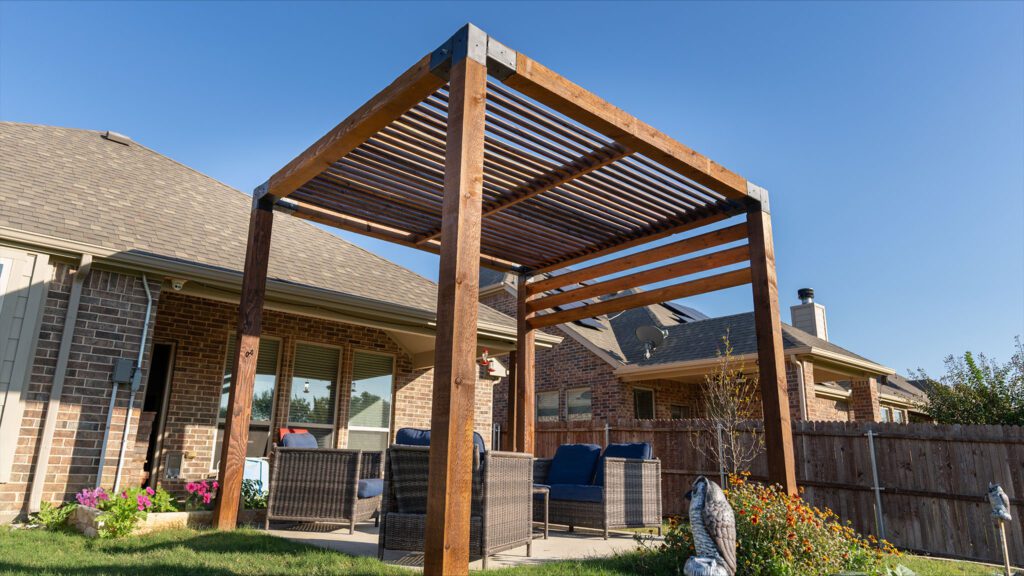
The material of your pergola will determine how it looks, how long it lasts, and how much upkeep it will require.
Wooden Pergolas
Wood adds a natural warmth and elegance to your backyard. Cedar and redwood are popular choices for their ability to resist rot and insects naturally.
Pine is more affordable but requires additional maintenance like regular sealing and staining every 2-3 years to keep it looking good.
Wooden pergolas typically last 15-20 years with proper care and fit well in both modern and traditional outdoor spaces.
Metal Pergolas
Aluminum and steel pergolas are strong and rust-resistant, making them a great option for wet climates. These materials are lightweight but durable, and they come in a variety of colors and styles.
Metal pergolas are often easier to install because they come in pre-cut pieces, and they can last over 30 years with minimal upkeep.
Vinyl Pergolas
Vinyl pergolas are extremely low-maintenance, requiring only occasional cleaning with soap and water. They won’t crack, peel, or fade and are resistant to moisture damage.
Though vinyl pergolas have a higher upfront cost, they can last over 50 years and require little to no maintenance throughout their lifespan.
Style and Design Options
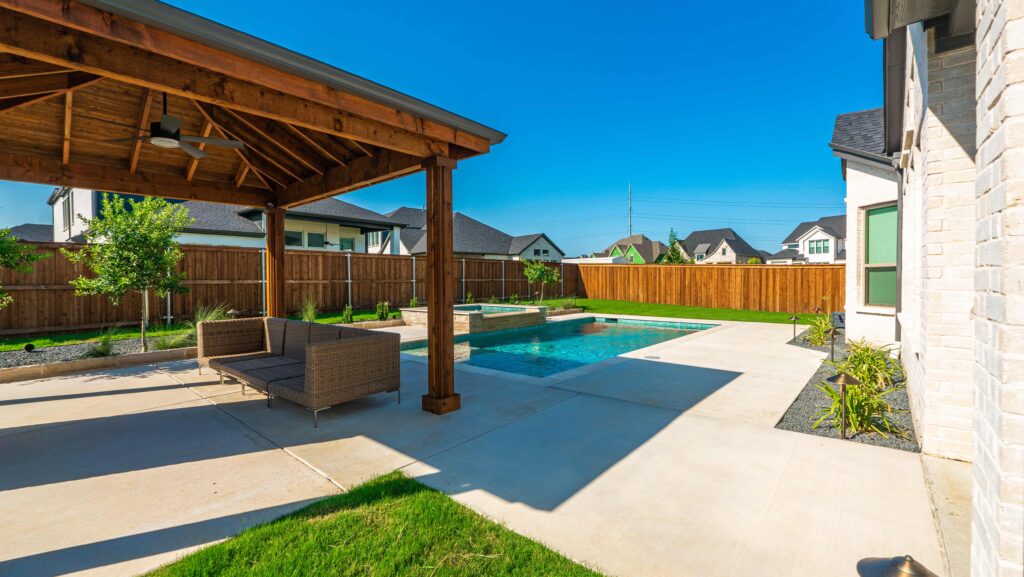
The style of your pergola will play a big part in the overall mood of your outdoor space. You can customize your pergola to fit both your home’s aesthetic and your personal taste.
Classic vs. Modern Designs
Classic pergolas tend to feature ornate details with curved beams and lattice patterns. These timeless designs often incorporate decorative end cuts and rounded columns.
Modern pergolas embrace clean lines and minimalistic details. They often feature straight beams and simple geometric patterns with sleek, monochromatic materials.
Customization Possibilities
Pergolas can be customized with a variety of roofing options like retractable canopies or clear polycarbonate panels. Some popular upgrades include:
- Built-in lighting systems
- Privacy screens or curtains
- Climbing plant supports
- Staining or painting finishes
You can mix materials too. For example, combine metal posts with wooden beams for an industrial-chic look or add stone columns to complement your landscaping.
Installation and Maintenance

Proper installation and regular upkeep will keep your pergola looking great for years.
DIY Installation Tips
If you’re tackling the installation yourself, start with a level foundation and ensure you follow the local building codes. Check for necessary permits and use quick-setting concrete to secure the posts.
Tools you’ll need:
- Post hole digger
- Level
- Power drill
- Measuring tape
- Wrench set
- Safety equipment
It’s helpful to have a second set of hands to make the job easier and safer.
Professional Installation Services
If you’d prefer to leave it to the pros, professional pergola installation ensures a smooth and efficient process. Experts bring all the tools and experience needed to get the job done correctly, often finishing the job in just a few days.
Long-Term Care and Upkeep
To keep your pergola in top shape, clean it twice a year with mild soap and water. Wood pergolas should be resealed or re-stained every 2-3 years.
Look out for signs of wear, such as:
- Loose connections
- Splintering wood
- Rust spots
- Warped boards
By inspecting and caring for your pergola regularly, you’ll be able to enjoy its beauty and functionality for years to come.
Leave a Reply Cancel reply
Phone: (469)-557-5722
Carrollton Office
3905 Cedar Ridge Lane, Carrollton, TX 75007
Colleyville Office
6600 Colleyville Blvd Suite #53, Colleyville, TX 76034